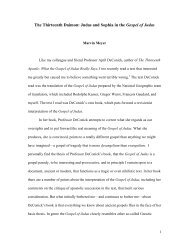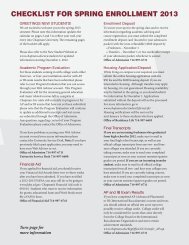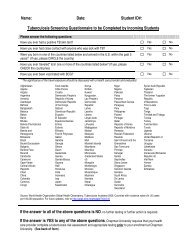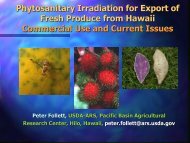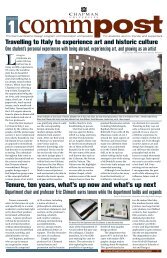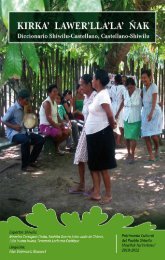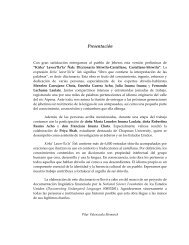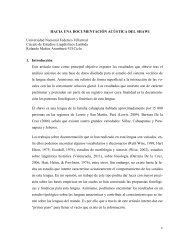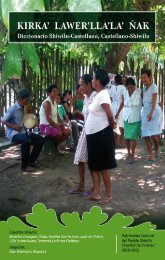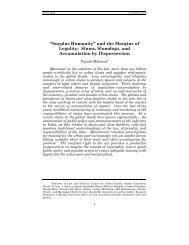WILKINSON COLLEGE MAGAZINE also - Chapman University
WILKINSON COLLEGE MAGAZINE also - Chapman University
WILKINSON COLLEGE MAGAZINE also - Chapman University
Create successful ePaper yourself
Turn your PDF publications into a flip-book with our unique Google optimized e-Paper software.
Preparing for the<br />
Next Big Burn:<br />
How Risk Perception Affects<br />
Californians’ Support for<br />
Fire Prevention Policies<br />
David Shafie, Assistant Professor of Political Science<br />
Anyone who has lived in California has long<br />
known the devastation that wildfire can<br />
unleash. It has become routine, even<br />
predictable, for several fires to scorch the<br />
boundaries of the state’s urban areas in a single season.<br />
In a 1968 issue of The Saturday Evening Post, author and<br />
native daughter Joan Didion reflected on life in California<br />
with the perennial threat of wildfire:<br />
At first prediction of a Santa Ana, the Forest Service flies<br />
men and equipment from Northern California into the<br />
southern forests, and the Los Angeles Fire Department<br />
cancels its ordinary non-firefighting routines. The Santa<br />
Ana caused Malibu to burn the way it did in 1957, Bel Air<br />
in 1961, and Santa Barbara in 1964. In the winter of 1966-<br />
67 eleven men were killed fighting a Santa Ana fire that<br />
spread through the San Gabriel Mountains.<br />
Last season, the ferocious wildfires of fall 2007 destroyed<br />
thousands of homes, forced one of the largest<br />
evacuations in state history, and are expected to have<br />
lasting social and economic impacts. More than 6,000<br />
acres burned in San Diego County alone, as 175kilometer<br />
per hour Santa Ana winds fanned flames across<br />
Orange and San Diego Counties. One person died and<br />
several others were injured in the hasty evacuation that<br />
ensued.<br />
A group of researchers at <strong>Chapman</strong> <strong>University</strong>’s<br />
Wilkinson College of Social Science and Humanities<br />
became interested in the long-term effects of the disaster.<br />
Communications scholars Lisa Sparks and Jennifer<br />
Bevan, and political scientist Ann Gordon and I set out<br />
2 <strong>WILKINSON</strong> REVIEW<br />
to examine residents’ attitudes, interpersonal<br />
communications, and perceptions of risk in the wake of<br />
the fires. Working in the Ludie and David C. Henley<br />
Social Science Research Laboratory in Wilkinson College,<br />
we collected survey data from Orange and San Diego<br />
County residents in the months following the fires. We<br />
wanted to learn why some residents were skeptical about<br />
government action to reduce the risk of future wildfires<br />
and why they were divided on such questions as limiting<br />
development in fire-prone areas and spending on fire<br />
protection. We <strong>also</strong> wanted to know how the experience<br />
of the fire might have affected their attitudes.<br />
Suburban development has exacerbated the risk of fire<br />
damage in the Wildland-Urban Interface (WUI). This<br />
refers to the zone, mainly in Western states, where homes<br />
are constructed adjacent to vast tracts of flammable<br />
vegetation. During the 1990s, 61 percent of new housing<br />
in California, Washington and Oregon was constructed<br />
in this area.<br />
As the risk of damage from wildfire increases, so does the<br />
cost to taxpayers. A report from the state legislative<br />
analyst estimated the annual cost of fighting wildfires in<br />
California rose from $408 million in 1997 to more than<br />
$1 billion in 2007. In an earlier era, when most<br />
development was limited to the flatlands of coastal basins<br />
and valleys, the cost of fire protection was low and simple<br />
to calculate: it was a function of the number of houses<br />
constructed. Increasing development in canyons and<br />
hillsides has multiplied that cost, since residences are<br />
surrounded by explosive fuel, property values are higher,<br />
and fires are more difficult to fight in the WUI. In 2007,<br />
Volume 1 Number 2 • Fall/Winter 2008




